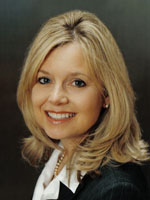Hands-on, Practical Guidance for Educators
From math,
literacy, science, equity, multilingual learners, and SEL, to assessment, school counseling,
and education leadership, our books are research-based and authored by experts
on topics most relevant to what educators are facing today.

Starting Strong
The new teacher's guide for understanding the roles, responsibilities, and relationships of teaching!
This ideal survival guide for navigating through the first year of teaching offers basic classroom layout suggestions for an optimal learning environment and frameworks to establish procedures that promote positive individual and group behavior. Novice teachers will also find guidelines for designing curriculum and instruction and clear methods for effective assessment. Additional how-to features include:
- Samples of oral and written communication for parents and colleagues
- Ways to create classroom newsletters
- Techniques for using Web sites for interactive learning
- Reflection questions for teachers at the end of each chapter
- Grade Level: K-12
- ISBN: 9781412955621
- Published By: Corwin
- Year: 2007
- Page Count: 232
- Publication date: August 14, 2007
Review Copies
Other Titles in: Classroom Management & Student Behavior | Teacher Induction | Teaching Methods & Learning Styles



